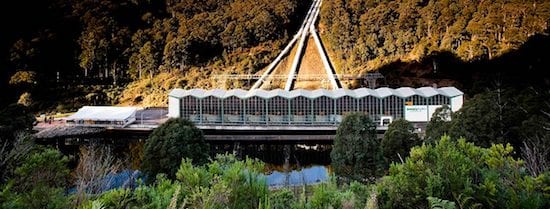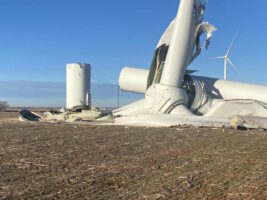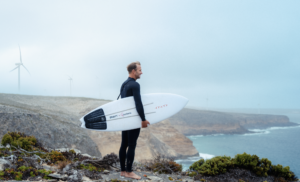Snowy Hydro appeared at Senate Estimates this week, where Paul Broad (Chief Executive and Managing Director) and Roger Whitby (Chief Operating Officer) answered questions.
The questions did not deal with our and others’ claims that Snowy Hydro had over-stated its capability and benefits and understated its costs. Instead it covered existing ground from new angles.
Snowy Hydro’s responses merit scrutiny. They are grist to the mill to those of us who think this project should be put on hold and independently reviewed.
Need for Snowy 2.0 now?
Broad emphasised that Snowy 2.0 was urgently needed now to cope with the expansion of renewables, and that eight Snowy 2.0’s are going to be needed.
To make the point he turned to Whitby who explained that last Friday renewables production ranged between a maximum of 11,500 MW and a minimum of 2,500 MW. The difference of 9,000 MW, he claimed, justified the need for Snowy 2.0 now.
Does the evidence support this claim?
Looking first at renewable generation last Friday we find that grid scale renewable production ranged between 5,935MW and 2,490 MW, a difference of 3,445 MW or about a third of Whitby’s figure.
In fact to get close to Mr Whitby’s claim we need to add AEMO’s estimate of gross rooftop solar (which takes the simultaneous peak renewable production to around 10,000 MW).
This production is behind the meter – about half is used on-site and the other half is exported to the grid and used by other customers on the distribution network.
It is already accounted for in the measure of operational demand. But it makes clear the ‘stretch’ in Whitby’s argument: the justification for Snowy 2.0 lies not in the variability of production from renewables – as Whitby argues – but in the ability of the power system to accommodate that variability, taking into account also the variability of demand.
With large amounts of synchronised thermal capacity, the current system can easily handle substantial variations in supply without the need for Snowy 2.0.
Whitby overstates the issue by isolating the variability (and growth) of renewable supply. Broad makes the same mistake by pointing only to the growth of renewables as justification for Snowy 2.0.
This ‘spin’ leads to an erroneous claim on the need for additional storage now.
Indeed, this is exactly what we find when we look at Snowy Hydro’s output on the Friday that Broad and Whitby vehemently argue illustrates the need for Snowy 2.0 now.
Specifically, on that day Snowy Hydro generated 4207 MWh in total.
This is just 0.83% of the NEM’s total generation for the day. And how much did the Tumut 3 pumped-hydro station pump or generate on that day? Well, it pumped nothing, and it generated 1 MWh (0.000199 % of NEM production for the day).
So on a day that Snowy Hydro argues emphatically proves the need for a massive augmentation of pumped hydro, we find no such need at all. To the contrary existing capacity lies barely used, as has long been the case.
Financial viability
In the hearing Broad reiterated that Snowy 2.0 would achieve an 8% Internal Rate of Return (IRR). Does this claim withstand scrutiny?
In its Final Investment Decision Report, Snowy Hydro forecasts how much Snowy 2.0 will pump and generate from 2026 to 2047 (see Figure 21 on page 77) and the average prices it will pay when it pumps, and receive when it generates.
The revenue from generation less the expenditure on pumping is Snowy 2.0’s gross revenue. We took these gross revenue numbers and discounted them back to the start of 2019 when Snowy 2.0’s main construction contract was let, to get a net present value.
If the IRR was 8%, the discounted present values of revenues (net of operating and maintenance expenditure) should equal the discounted capital cost. But the discounted revenues are only $1.3bn and the discounted revenue less construction and maintenance would be much lower still.
Evidently, Snowy 2.0 produces gross revenues – before allowing for maintenance and operating costs – that in present value terms are likely to be worth less than a third of Snowy Hydro’s claimed build cost of $3.8-$4.5bn (and this claimed cost excludes financing, hedging, GST, project management, operational spares, transmission and other items, according to Snowy 2.0’s Feasibility Study).
As an aside, Snowy insists that the $5.1bn contract that they let in 2019 to build part of the plant is somehow equivalent to $3.8-$4.5bn in 2017 dollars.
How so, especially as the contract covers only part of the project whilst the $3.8-$4.5bn is supposed to cover the entire project.
We note that Broad assured us at the time that $60m of exploratory work would confirm the cost to be ‘at the lower end of the spectrum’ (i.e. $3.8bn, not $4.5bn)?
Even if we assumed Snowy 2.0 operated for 100 years and produced as much revenue in each of those additional 78 years as it did in 2047 (the last modelled year) and assumed it cost nothing to operate and maintain for these 100 years we still only get to a present value of revenues of $1.7bn.
Snowy Hydro’s numbers lead to the conclusion that Snowy 2.0 will be a huge burden on Australian taxpayers.
Impact on prices
Finally, let’s look at claims on the impact of Snowy 2.0 on electricity prices. This was covered in Reneweconomy when the Final Investment Decision was published.
It merits renewed focus considering Minister Taylor’s objectives (“the minister for getting electricity prices down”) and considering his defence of Snowy 2.0 in an ABC 7/30 report in which his main argument was that Snowy 2.0 will reduce prices.
 Here, too, the claims fall far short of the facts. Specifically, Figure 12 of the FID (on page 69 of the Market Modelling chapter) shows that Snowy 2.0 is expected to reduce NSW spot prices for only 3 of the projected 22 years from 2026 to 2047 (Snowy provides no information on prices in Victoria or South Australia).
Here, too, the claims fall far short of the facts. Specifically, Figure 12 of the FID (on page 69 of the Market Modelling chapter) shows that Snowy 2.0 is expected to reduce NSW spot prices for only 3 of the projected 22 years from 2026 to 2047 (Snowy provides no information on prices in Victoria or South Australia).
Prices are similar from 2028 to 2033, but then are higher for every year thereafter to 2047. In fact the only year where Snowy 2.0 is predicted to meaningfully reduce prices is in 2026 (assuming Snowy 2.0 is fully operational by then), the year that Snowy Hydro says it will generate (and pump) less than all other years.
Since Snowy Hydro’s documentation shows Snowy 2.0 almost invariably raises prices, Mr Broad should be asked to explain why he repeatedly insists to the contrary.
The buck must stop
Ultimately the buck for Snowy 2.0 stops with its two Shareholding Ministers, Angus Taylor and Mathias Cormann. They have lots on their plates and need to rely on advice. Evidently they have been badly advised. They must surely realise this now.
Not matter how you look at it, Snowy 2.0 is a giant folly at the public’s expense. It is time for these ministers to take the bull by the horns.
Bruce Mountain is the Director and Steven Percy is a Research Fellow at the Victoria Energy Policy Centre at Victoria University










